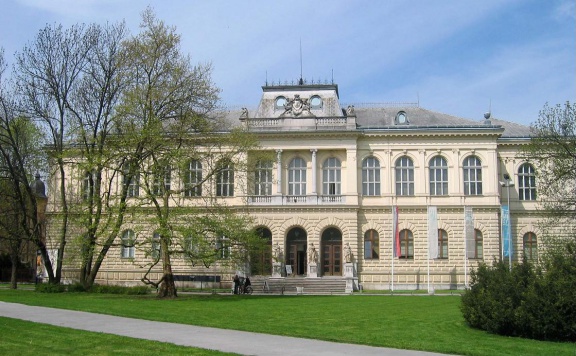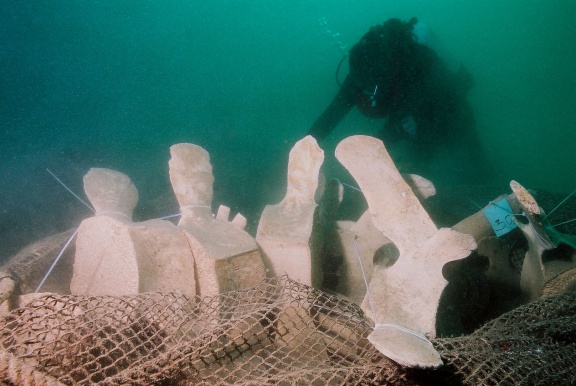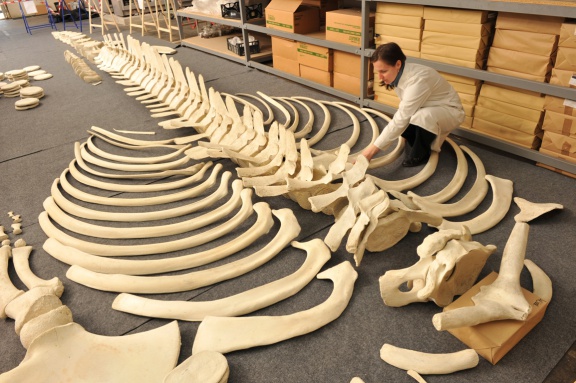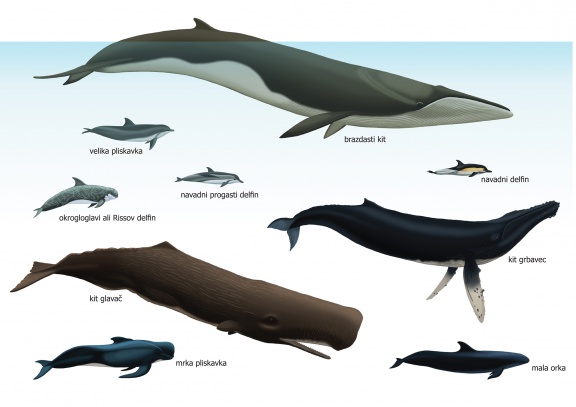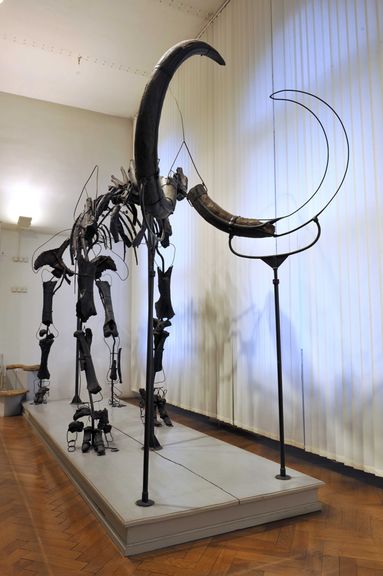Slovenian Museum of Natural History
History
In 1944 the national history collections were separated from the National Museum to become the Museum of Natural History in Ljubljana. The museum was renamed as the Slovenian Museum of Natural History in 1963. Because the museum is overcrowded, a new museum building has been planned in the Biology Center in Ljubljana for years.
Rudolfinum
The Rudolfinum building which houses both museums, was built in 1883–1885 by the Vienna architect Wilhelm Resori and realised by Ljubljana architect Viljem Treo, while the interior was designed by Jan Vladimir Hrasky. The building is named after crown Prince Rudolf.
Rudolfinum has a spatial park in front of the main Neo-Renaissance façade, structured with a central projection with Ionic columns in the upper part and with allegoric statues of Courage and Kranjska, holding the coat of arms, at the roof. In front of the projection stand four allegoric statues presenting Art, History, Natural Sciences, and Labour.
The building encloses an atrium together with its two wings. The ceiling paintings are a work of Jurij and Janez Šubic, dating in 1885, while the main staircase is decorated with lying statues, made by Graz sculptor Viet Königer. They were removed from the Novo Celje Castle after the Second World War. The atrium was rearranged into the exhibition venue by the architect Marko Mušič, when a glass roof was constructed in 1986–1991.
Programme
With its important zoological, botanical and geological collections, the Slovenian Museum of Natural History functions as both a research institution and as a showroom for national, European and worldwide collections which demonstrate changes in biodiversity, the development of natural history thought and the different techniques of collection and preparation of samples. The museum has its own library.
Collections
The museum's geological-palaeontological collections include fossils from various Slovene sites, including an almost complete 20,000-year-old mammoth skeleton found at Nevlje near Kamnik. Also of significance are a 210 million-year-old 84-centimetre-long fish skeleton found in the Triglav Mountains and a Miocene-era baleen whale skeleton found in Slovenske Gorice.
One of the museum's founding collections was Baron Sigmund Zois's mineral collection. Although it is an outstanding historical collection, minerals are now exhibited as classified by modern methods according to their internal structure, and among them is the mineral zoisite, named after Zois. There are also two Biedermaier wooden tables that are covered by tiles from Palnstorf's collection of minerals and rocks.
Hohenwart's collection of mollusc shells comprises about 5,000 specimens, dating from 1831 and originating mainly from the Indo-Pacific. The insect collection of Ferdinand J. Schmidt includes several interesting specimens, notably the "narrow-necked" blind cave beetles (Leptodirus hochenwartii) that were described in 1831 as the first cave insect. The plants and animals of the mountains, marshes, and woods are shown in specialised dioramas. Also on view are permanent bird, reptile, fish, mammal and skeleton collections.
The Slovenian Wildlife Sound Archive is a collection of animal sounds, mainly on Heteroptera and Cicadas, stored on digital and analogue recording media.
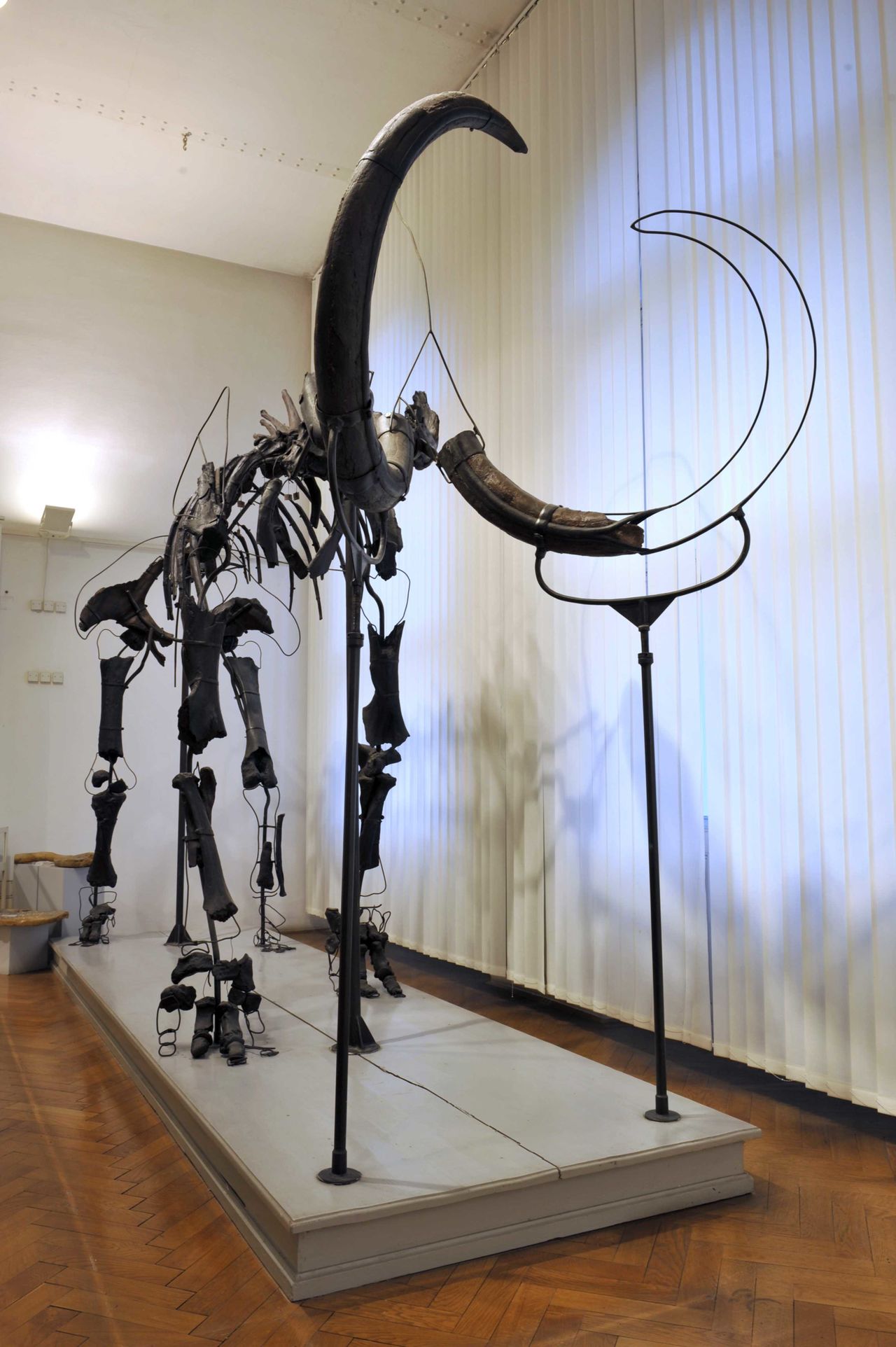 Mammoth skeleton, Slovenian Museum of Natural History symbol
Mammoth skeleton, Slovenian Museum of Natural History symbol
Exhibitions
Beside permanent exhibitions, temporary ones are staged regularly; past exhibitions have included Our Little Big Sea on Slovenia part of the Adriatic Sea (2014–2020) and The Mysterious Death of Young Leonora, where a skeleton of a fin whale (Balaenoptera physalus) was on display (2011–2013), and which both received the Valvasor Award, Evolution of the Earth and the Geology of Slovenia (2009), for which authors Miha Jeršek, Matija Križnar and Renato Vidrih have received the recognition Prometej znanosti for excellence in communicating science in 2009, given by the Slovene Science Foundation.
Some other temporary exhibitions include: What is changing the world (2006), The Treasury of Geological Heritage (2003), Snakes – Why are We Afraid of Them? (2002), Ljubljana Marsh and Iška (2001), The Mammoth in Herman's Den (2000), Slovene Nature, Istria and Carst, Diversity of Minerals (2000) and Hidden Treasures of Macedonia (1999).
International cooperation
The museum has participated in various research programmes in cooperation with institutions from abroad such as the National Museum Prague, Prirodonaučen muzej na Makedonija, Natural History Museum in London, Naturhistorisches Museum Wien and the Natural History Museum of the Netherlands, as well as in bilateral cooperation with museums in Czech Republic and Croatia.
In recent years the museum has organised a European hemipterologic congress in Fiesa and has participated in the symposium on the Role and Importance of Natural History Museums and Natural History Collections for Sustainable Development in Rijeka, Croatia. The museum was involved in the European BioCASE and KeyToNature project and in the European Union for Bird Ringing (EURING). It participated in the project International Year 2010 of Biodiversity and in the project International Year of Forests, 2011.
Publications
The museum publishes the serial publications Scopolia, Acta entomologica Slovenica in cooperation with the Slovenian Entomological Society Štefan Michieli, and Illiesia, International Journal of Stonefly Research with co-publisher the Mississippi College, which is freely available online. Temporary exhibitions are generally accompanied by specially published catalogues. The museum has published also some audio media of animal sounds, as an educational instrument for recognising different specimens of frogs, birds, cicadas, and others.
See also
External links
- Slovenian Museum of Natural History website
- Slovenian Museum of Natural History on Wikipedia
- Alpine Botanical Garden Juliana on Wikipedija (in German)
- Slovenian Museum of Natural History on Virtual Guide to Slovene Museums and Galleries
- Slovenian Museum of Natural History panoramas on Virtual Guide to Slovene Museums and Galleries
- Illesia Journal website




